LearnedAmateur
National Hazard
   
Posts: 513
Registered: 30-3-2017
Location: Somewhere in the UK
Member Is Offline
Mood: Free Radical
|
|
Tetraphenylethylammine copper (II) nitrate
I did a quick experiment in an attempt to synthesise this complex ion, having done a similar reaction involving aqueous ammonia and copper sulphate in
the past, which forms tetrammine copper sulphate. Here’s my procedure:
1. Dissolve 0.01 moles of copper nitrate, 0.04 moles phenylethylamine hydrochloride, and 0.04 moles sodium hydroxide in three separate aqueous
solutions.
2. Mix the amine and sodium hydroxide solutions to form phenylethylamine base, sodium chloride, and water. Fishy amine smell is observed, so the
reaction was successful.
3. Slowly add amine solution to the copper nitrate. Initially, copper hydroxide precipitated out as light blue gelatinous precipitate and the solution
went clear. Upon further addition, solution turned olive green but a large mass of copper hydroxide remained. Still smells fishy.
4. Complete addition resulted in the precipitate turning light green in colour, kinda halfway between the solution and the hydroxide.
Does anybody know the solubility of the salt in water? I can’t seem to find much information on the internet and certainly not after UTFSE. The
precipitate never dissolved as you’d expect, merely shifting colour from light blue to light green and remained so even during vigorous stirring.
Will filter and dry some precipitate, and test the solubility in various solvents tomorrow.
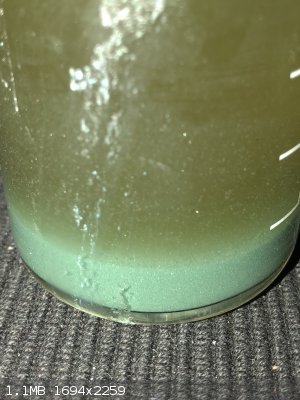
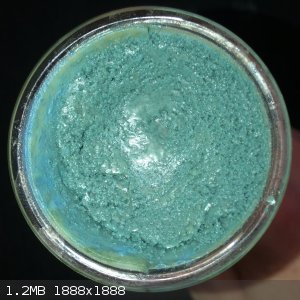
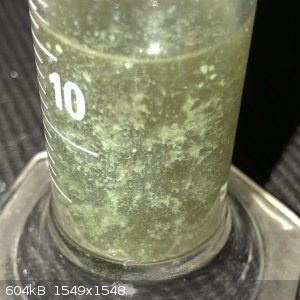
In chemistry, sometimes the solution is the problem.
It’s been a while, but I’m not dead! Updated 7/1/2020. Shout out to Aga, we got along well.
|
|
|
symboom
International Hazard
    
Posts: 1143
Registered: 11-11-2010
Location: Wrongplanet
Member Is Offline
Mood: Doing science while it is still legal since 2010
|
|
This sounds like an energetic complex with fuel and oxidizer in the compound I worry the use of sodium hydroxide has made copper hydroxide I would use
ammonium hydroxide first the copper will form an amine complex then add the PEA since the complex seems to be insoluble according to the picture it
also ensures that no copper hydroxide produced on the side
Nickel hydrazine nitrate is what it reminds me of.
[Edited on 16-1-2018 by symboom]
|
|
|
woelen
Super Administrator
        
Posts: 7976
Registered: 20-8-2005
Location: Netherlands
Member Is Offline
Mood: interested
|
|
No, I would not use ammonia as a base. I also would use sodium hydroxide, but I would allow for a slight excess amount of the amine.HCl, just to be
sure there is not excess hydroxide.
It is a pity that you don't have the sulfate salt of this amine. Chloride ion also is a fairly good complex formation agent with copper. I can imagine
that your green solid contains quite some chlorine, coordinated to copper ions.
I do not know anything about this complex though. I once tried making a complex of copper with dimethylamine and diethylamine (just adding the free
amine to a solution of copper sulfate), but these do not form a deep blue complex like ammonia. With monomethylamine, a deep blue complex is formed,
but it is less stable than the complex with ammonia. It easily precipitates copper hydroxide in aqueous solution. It seems that the more
hydrogen-substitutes there are on the ammonia molecule, or the bulkier the substitutes are, the more difficult the formation of a copper complex
becomes.
|
|
|
LearnedAmateur
National Hazard
   
Posts: 513
Registered: 30-3-2017
Location: Somewhere in the UK
Member Is Offline
Mood: Free Radical
|
|
Quote: Originally posted by symboom  | This sounds like an energetic complex with fuel and oxidizer in the compound I worry the use of sodium hydroxide has made copper hydroxide I would use
ammonium hydroxide first the copper will form an amine complex then add the PEA since the complex seems to be insoluble according to the picture it
also ensures that no copper hydroxide produced on the side
Nickel hydrazine nitrate is what it reminds me of.
[Edited on 16-1-2018 by symboom] |
The sodium hydroxide only comes into contact with the PEA HCl, where it is converted into NaCl, this is done to generate the basic amine since that
lone pair isn’t present in the phenylethylammonium salt. All simpler amines (at least the small primary ones), including ammonia, cause the initial
precipitation of copper hydroxide and adding a greater amount leads to the amine complex - about a 1:4 Cu:amine ratio.
In chemistry, sometimes the solution is the problem.
It’s been a while, but I’m not dead! Updated 7/1/2020. Shout out to Aga, we got along well.
|
|
|
LearnedAmateur
National Hazard
   
Posts: 513
Registered: 30-3-2017
Location: Somewhere in the UK
Member Is Offline
Mood: Free Radical
|
|
Woelen, I think I had about 100 or so milligrams excess of the PEA, can’t be sure since my scales are just one of the cheap Chinese ones but I have
tested their accuracy and they’re not too bad. The basic amine solution came up at about pH 8-10 (couldn’t really tell, UI showed green but it was
a bit darker than the reference shades) so if there was any hydroxide then there would’ve only been a slight excess - definitely not enough to
account for the massive flurry of Cu(OH)2 made. Yeah, I’ve played around with chloride complexes before and they’re quite easy to make; might try
to convert the PEA to the sulphate and crystallise it out, and I’ll use copper sulphate as well to try and minimise unwanted ions - I just used
copper nitrate here since I seem to have way more (I make it myself but it is pretty pure, being in crystal form and having been recrystallised into
nice regular specimens).
If I get around to making some silver nitrate solution then I’ll attempt to titrate the chloride content of the water, see how much chloride has
been incorporated into the complex ion then hopefully have a go at determining the formula.
It might’ve just been my imagination but at one point, when the solution went clear, I could’ve sworn that the filtered solution had an ever so
slight pink-purple tinge to it, what you’d expect if you added a couple of grains of KMnO4 to water or something.
I had no troubles making a complex with basic DMAE and copper nitrate, it should be on the Everyday Chemistry thread but that formed a very dark deep
blue-purple solution that is quite stable, I’ve still got it buried in my reagent drawer.
[Edited on 16-1-2018 by LearnedAmateur]
In chemistry, sometimes the solution is the problem.
It’s been a while, but I’m not dead! Updated 7/1/2020. Shout out to Aga, we got along well.
|
|
|
LearnedAmateur
National Hazard
   
Posts: 513
Registered: 30-3-2017
Location: Somewhere in the UK
Member Is Offline
Mood: Free Radical
|
|
Sorry for all the posts but I’ve got something very interesting indeed! Even with the massive amounts of water, the precipitate has sucked it all up
and solidified to a spongy, sticky mass which has glued itself to my beaker.
My solution in the measuring cylinder has now lost its colour, which is now in the form of an olive green precipitate. Filtered precipitate has become
slightly more green compared to last night.
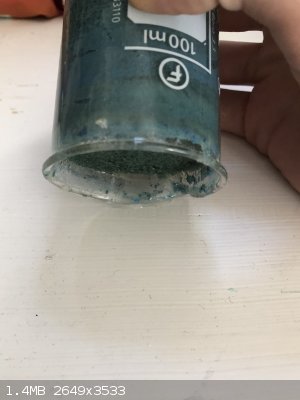
[Edited on 16-1-2018 by LearnedAmateur]
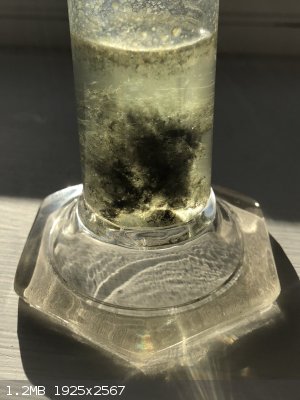
In chemistry, sometimes the solution is the problem.
It’s been a while, but I’m not dead! Updated 7/1/2020. Shout out to Aga, we got along well.
|
|
|
LearnedAmateur
National Hazard
   
Posts: 513
Registered: 30-3-2017
Location: Somewhere in the UK
Member Is Offline
Mood: Free Radical
|
|
Just ran a small battery of tests on the washed precipitate, which turned from the turquoise blue to dark forest green when added to moderately hot
water.
From left to right: 90% ethanol, moderately soluble, with noticeably less precipitate failing to dissolve. 99.9% isopropanol, slightly soluble but
with far less dissolving than the ethanol. 50% formic acid, freely soluble with some loss of colour. Dilute H2SO4 (10 drops 96% in 2mL water),
complete dissolution with evolved gas and loss of all colour.
**Addition of two more spatula loads to the acids was done, which resulted in further colour changes. The formic acid (L) took on a darker, more
‘pure’ green, whereas the sulphuric acid solution became olive green.
The amount on the spatula is how much I used for each test, amounts of solvent were all eyeballed since it’s just a qualitative test. Very strange
that the last test doesn’t even have a hint of blue, yet it’s obvious that the copper must still be in there!
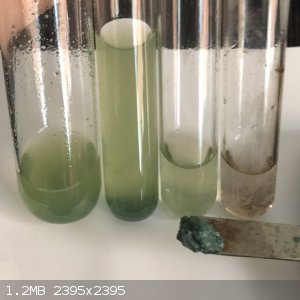
[Edited on 16-1-2018 by LearnedAmateur]
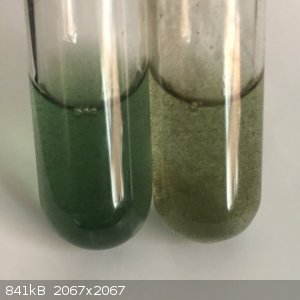
In chemistry, sometimes the solution is the problem.
It’s been a while, but I’m not dead! Updated 7/1/2020. Shout out to Aga, we got along well.
|
|
|
woelen
Super Administrator
        
Posts: 7976
Registered: 20-8-2005
Location: Netherlands
Member Is Offline
Mood: interested
|
|
This is a remarkable reaction. Apparently, the complex is not formed immediately, but slowly. It also seems to incorporate a lot of water in its
lattice.
Is it possible to dry a larger amount of this precipitate, such that you get a dry olive-green powder? The dark green solid almost certainly must be a
complex of your amine.
|
|
|
LearnedAmateur
National Hazard
   
Posts: 513
Registered: 30-3-2017
Location: Somewhere in the UK
Member Is Offline
Mood: Free Radical
|
|
I wasn’t expecting it to be nearly as complicated as it was, merely as an analogous reaction to ammonia. That’s what I found, I believe the bluish
hue was residual copper hydroxide and adding to hot water seemed to push it to completion, albeit it was fresh water and not the supernatant liquid I
used which is where it confused me a bit, I was half expecting it to return to the original colour upon cooling but it seems to be quite stable. It
seemed to adhere quite well to the glass and a skin kept forming on top of the liquid - upon stirring the effects were broken and it returned to a
gelatinous suspension.
I’ve still got the olive green stuff sitting in a beaker with the liquid in hopes more will precipitate out over time, but I do have a gram or so of
the dark green solid air drying on filter paper. I tried a burn test with the wet solid on the spatula pictured above, same amount - it crackled a bit
due to the water and seemed to support combustion with yellowish hints to the flame, but there was hardly any residue so there must be a LOT of water
in there. There was also a bit of smoke which had quite a unique odour that I can’t quite place nor describe, just your bog standard and unhelpful
‘chemical’ or ‘artificial’ smell. I’ll try it again if/when I can fully dry it to a powder.
Edit: more of the olive green solution has precipitated today so I’ll try and get some dried in the next few days. The dark green sample drying
isn’t completely so, but it is close - I did another burn test and I can place the smell, it’s similar to burning plastic. There was a small
amount of reddish brown residue which I believe is a mixture of copper metal and copper (II) oxide. The flame was a nice bright green this time so
that was a good sign.
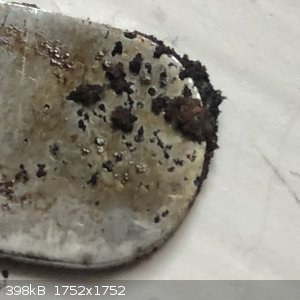
[Edited on 17-1-2018 by LearnedAmateur]
In chemistry, sometimes the solution is the problem.
It’s been a while, but I’m not dead! Updated 7/1/2020. Shout out to Aga, we got along well.
|
|
|
LearnedAmateur
National Hazard
   
Posts: 513
Registered: 30-3-2017
Location: Somewhere in the UK
Member Is Offline
Mood: Free Radical
|
|
The olive green precipitate doesn’t seem to be stable, even when sitting in solution it had turned to a sparkly black powder which dries easily, I
have no idea what it could be but I highly doubt it has decomposed all the way to CuO. Could be some sort of copper catalysed reaction between the
ligands? Hard to determine when I’m not even sure how the two are different, let alone any potential catalytic properties of the ion..
The dark green precipitate is still the same colour and is far more stable, my sample has air dried completely to brittle chunks, just need to crush
it into a powder and determine the density; seeing as it’s stable and seemingly non-reactive, I can try to grow some crystals and hopefully clean it
up a little more.
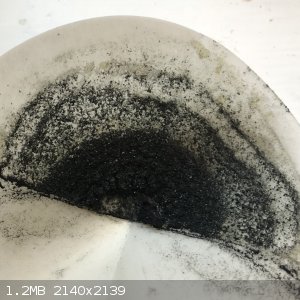
[Edited on 19-1-2018 by LearnedAmateur]
In chemistry, sometimes the solution is the problem.
It’s been a while, but I’m not dead! Updated 7/1/2020. Shout out to Aga, we got along well.
|
|
|